

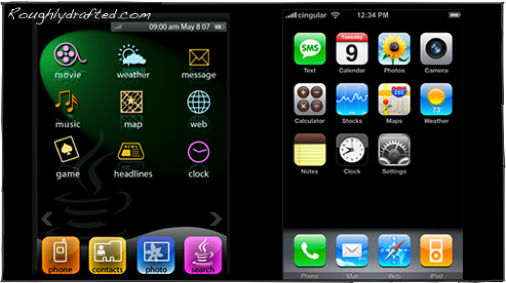
At its JavaOne developer conference in San Francisco, Sun unveiled software for mobile phones that a number of writers heralded as a new competitor to Apple's iPhone. Should Apple be scared?
Commentators speculated that the fancifully named jPhone would not only give Apple's iPhone a run for its money, but could somehow even “beat it to the punch,” as one pundit--Alexander Wolfe--wrote in his blog for Information Week (what a delightfully fun homonym).
“Seems like everybody wants to get in on the ‘I've got a better smartphone’ party,” Wolfe wrote. “The ‘best press coverage for something that doesn't exist award’ goes to Apple, which has earned plaudits for its iPhone, even though there's a big question mark as to how well the thing will work.”
Of course, in reality, the iPhone not only exists, but has been reviewed by writers with hands on experience. There’s no question mark, just an ellipsis followed by an exclamation point. The only place for a question mark in the mobile industry sits at the end of the challenge presented to other vendors: what are you doing in response?
Problematic Realities for Sun’s jPhone.
The stampede to position Sun's announcement as a credible threat to the iPhone neglects to consider a series of painful realities.
The first is that Sun doesn't expect the new software to be ready until months after the iPhone launch. With that in mind, it will be impossible for Sun to beat Apple to the punch; the company has a good buzz going already.
Of course, there's also the fact that Sun has offered its Java 2 Mobile Edition for years, a mobile platform that has done little to advance the state of the art in cell phones and really nothing for consumers at all.
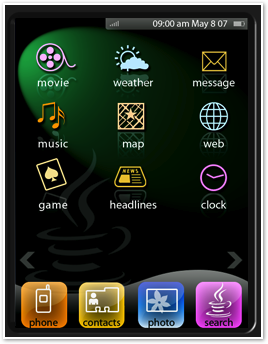
Despite its promise to enable ‘write once, run everywhere’ mobile software for all phones, J2ME is really better described as ‘write once, debug everywhere, sell nowhere.’
And of course, there's the troubling detail that the “new” JavaFX Mobile is really just Sun's rerelease of a Java platform implementation it bought from SavaJe, software that has already been sitting on the market without getting any attention.
What converted SavaJe's struggling Java platform into a nascent iPhone rival with time travel abilities: conjecture by pundits like Information Week’s Wolfe?
Apparently, all the jPhone noise stems solely from the fact that Sun had the brilliant stroke of genius to copy the look of Apple's iPhone button menu, but substituting coffee icon for search.
Bravo, Sun! You've made as much progress in “mobile technology” as a few nerds accomplished months ago when they threw together copycat iPhone skins for WinCE and Palm phones.
Sun’s Pickle in Mobiles.
Imagine you are given the task of competing against a rapidly growing business. Say the business you are charged with rivaling is Quiznos, the Denver, Colorado sandwich chain that itself seems intent on killing Subway.
The good news is that your efforts are getting a lot of press; the bad news is that all you have so far is a pickle. No sandwich stores, no sandwich recipes, no food service managers or employees, no past success, no reputation, and no customers.
No matter how you shake that pickle, you're not going to do much to stop customers from going to Quiznos. The only way your current situation could be more pathetic would be if the world knew that the last time you tried to sell a pickle in the food industry, you had it stolen by McDonalds.
If you happened to be in such an unfortunate situation, you'd have a lot in common with Sun.
Sun's pickle is a layer of software that simply doesn't offer much competition without the rest of the product and without any sales, support, or production infrastructure. Even worse, the last time Sun pulled out a pickle, it ended up getting ripped off by its partner and rival. Sun’s pickle is Java.
Sun's Java Rush.
A decade ago, Sun happened to be perfectly positioned to benefit greatly from the dot com boom. The company even called itself “the dot in dot com” in a series of embarrassing advertisements.
Sun made big bucks selling its highly regarded Solaris servers to Internet startups, resulting in the massive sales surge and subsequent crash reflected in its historical stock price. It never recovered.

In addition to Sun's very real success in selling its workhorse servers, the company was also behind one of the largest hype fiascos of the 90s: the massively overblown Java buzzword. Everybody wanted in on Sun’s Java buzz, from Apple to Microsoft and everyone in between.
Apple hoped that supporting Java would make the faltering Mac platform more attractive to developers, while Microsoft hoped that its embracing of Java could squeeze the life out of what was then considered to be one of the greatest threats to the continued dominance of the Windows platform.
The Bitter Percolations of Java: 1995-2000.
After partnering with NeXT in 1995 to port OPENSTEP to Solaris, Sun decided instead to dump NeXT's mature and newly opened object oriented frameworks and programming language and invent its own inferior stunt doubles.
Microsoft's Cairo vaporware had already served to distract the world from recognizing that NeXT had delivered much of the future way back in 1989, so Sun's attempts to assassinate the NeXT platform and install its own Java as an heir to the throne of technology went mostly unnoticed.
Perhaps a vengeful pantheon of gods noticed, because Sun's nefarious ploy against NeXT was heaped upon its own head just a few years later, when Microsoft licensed Sun's Java, loved it to death with its extinguishingly lethal embrace, and installed its own slightly more inferior placeholder in its position.
Outraged to be played by its own game, Sun began boiling up more new serving suggestions for Java than Microsoft had of Windows, each more bitterly disappointing than the last.
Lots of Roasted Beans.
Java originally intended to be exactly what NeXT's OPENSTEP was: a layer of whipped cream that could top nearly every existing operating system, making each more palatable and rich. Java intended to run on everything from Windows to Unix to the Mac as a virtual machine, allowing software written for Java to run anywhere.
When that strategy began failing--in part due to the Karmic double-crossing of Microsoft, but also because of the immaturity and impracticality of Java at a time when PCs already struggled to run the OS they shipped with--Sun reinvisioned Java as a language for writing server applications, a way to add programable elements to web pages, and as a general purpose application language.
While finding some success in those areas, none of them did a lot to enrich Sun. As Java boiled on, a series of more scaldingly acetic Java variants appeared, only to serving to disgust the market. From Jini device control to Java on a chip to JXTA distributed processing, Sun could not seem to sell its magic Java beans.
With All This Hype, Who Needs Sales?
Despite the failure of the majority of Sun's Java initiatives to go anywhere, Java itself managed to plough a deep furrow in the face of technology.
Apple delayed the release of Mac OS X by considering plans to change its own Objective-C language syntax to look more like Java and by working to build a Java bridge to the native Mac OS X application frameworks.
The name of Apple's Mac OS X frameworks was even named Cocoa in part to associate it with Sun's Java. The other reason was that Apple already owned the Cocoa trademark, having using it earlier for a children's programing environment.
Apple's developers asked the company to leave Objective-C alone, and made so little use of the Java bridge that Apple eventually abandoned it. While Apple still works to maintain Java compatibility in Mac OS X, and even rewrote WebObjects using Java, Apple's primary focus today is on Cocoa.
Microsoft similarly has evolved its focus from building an ‘embraced and extinguished’ version of Java that only works on Windows to creating its own development environment that is beginning to look more like Cocoa: .Net.
J2ME: It Just Rolls Off the Tongue.
Of course, Sun is selling Java. The company has licensed its Java technologies on billions of PCs (including Macs), mobile phones, and all matter of embedded systems. For many applications, Java is a good choice. There's lots of proficient Java developers, and Sun has delivered regular advancements to its Java frameworks.
Where Java begins to lose value is when it is applied like Windows, as a layer pasted onto various hardware units with enough differences to create headaches but too few differences to stand out in the market place. Like Windows, J2ME only offers a pickle when consumers want a whole sandwich.
That's something that should have Sun sleepless: its wide but shallow position in mobiles is too similar to Microsoft's position as the vendor of a wide but shallow layer on PCs.
Being like Microsoft is not really as great as it sounds. Sun's pickle position in mobiles has a lot to lose in a competitive market, but the company has little ability to solidify its grasp.
The Sandwich and the Pickle.
By looking at the real layers involved in a product, rather than just some marketing mockups and screenshots, this perspective starts to make more sense.
Look at the iPhone as a sandwich. The device itself has these layers:
-
•User interface
-
•Applications
-
•Development Frameworks
-
•Operating System
-
•Firmware Integration
-
•Hardware Features
But since it's a mobile phone with network features, it also has some other external layers:
-
•A Mobile Service Provider
-
•Bluetooth Services
-
•WiFi Networking
But its also a media player with PDA features. Add:
-
•Integration with a PC media library
-
•Sync support with PC applications
Apple also adds a few other layers as a manufacturer, retailer, and media content distributor:
-
•User support and training
-
•Retail stores and repair service
-
•iTunes media sales and podcasts
How Do You Like Them Sandwiches?
Apple is a Quiznos. It has the stores, employees, recipes, product variety, past success, reputation, and demand.
Suddenly it's obvious that the value of the iPhone isn't just that it has a clever grid of squarish icons on the front, or that it is a thin phone, but that it is an integrated product and part of an overall successful business.
It’s the next generation of the iPod, a product Apple has been maintaining so expertly over the last half decade that it has become a lionized part of the culture, a household name, and is leading the market.
It's also a Mac, drawing upon a half decade of leadership in hardware, graphics, application, network, sync, and operating system technology. Macs are also known for inventing and pushing ahead a sophisticated, intuitive, and original user interface, both back in the mid 80s and again with Mac OS X’s Aqua.
Sun’s JavaFX Pickle.
Now let's look at Sun's pickle, JavaFX. Cutting through all the marketing hype, it is in reality just a renaming of SavaJe's Java platform, now called JavaFX Mobile, paired with a scripting language developed at Sun, formerly called F3 but now referred to as JavaFX Script. Together, the pair make up a layer of development frameworks.
That's it. Apple has a sandwich store chain, while Sun has a pickle and desperately needs everything else.
In order to make its pickle look more like the iPhone, Sun took the OpenMoko Linux platform prototype, copied the iPhone's icons, and downplayed everything else about OpenMoko, from the fact that it is designed to be an open platform, to the fact that it really isn't much beyond a prototype hoping to be an open platform.
The layers of OpenMoko are a blueprint that largely addresses these layers:
-
•Operating System
-
•Firmware Integration
-
•Hardware
OpenMoko: Write Our Software, Chumps!
The only manufacturer who announced interest in actually building an OpenMoko phone is FIC, a Taiwanese company who doesn't even present the Neo1973 phone--a device resembling the iPhone which it announced months ago would be based upon OpenMoko--anywhere on its public website.
Where is it? It’s still in development. The OpenMoko project indicates that it was FIC that floated the OpenMoko project just weeks after the iPhone was launched, apparently to allow the open source community to develop software that FIC could use for free in competing with Apple.
Building the jPhone on OpenMoko is a bit like roofing a house that isn't built yet. OpenMoko is a plan to make open source mobiles. How about learning to walk first? Where's the open source iPod? Where's Linux on the desktop? If we can't build a successful desktop PC using open source and have anyone buy it, why would more than 500 people buy a mobile device running such a system?
According to Sun, it’s because its own FX version of the FIC prototype phone looks more like the iPhone than OpenMoko’s original mockup.
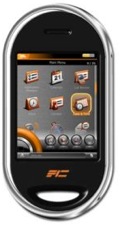
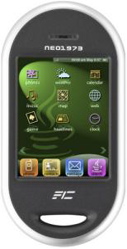
Too Many Pickles Already.
There are already plenty of Linux distros trying to edge their way into the mobile phone market, from Palm's ACCESS to Trolltech's Qtopia to MontaVista's MobilLinux, used by Motorola in its phones.
All those projects are desperate for hardware makers to use them, for software developers to build apps for them, and for users to want to buy them.
Sun is trying to sell its pickle at a freakin' pickle convention at a time when the market is saturated with pickles. But users don't want pickles, they want sandwiches.
They want to buy that sandwich at a shop that's clean and pleasant and where they've enjoyed good sandwiches before. Pundits seem to think every time some vendor flaps a pickle, Quiznos is headed out of business. How ruthlessly absurd.
The real layers of the iPhone that make it different and attractive to potential buyers are not its invisible bits and whether someone was paid to develop them--or if anyone can DIY their own version of its OS kernel.
No, the real value suggested by the iPhone is in its other layers, layers Sun has no experience, capacity, or interest in building. Sun simply hopes the world will build a sandwich store chain around its pickle.

Like reading RoughlyDrafted? Share articles with your friends, link from your blog, and subscribe to my podcast!
Next Articles:
This Series

Haloscan Q107
Sun Tries to Jump on iPhone Bandwagon with jPhone
Saturday, May 12, 2007

Ad





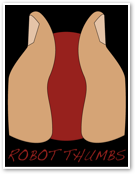
 Bookmark on Del.icio.us
Bookmark on Del.icio.us Discuss on Reddit
Discuss on Reddit Critically review on NewsTrust
Critically review on NewsTrust Forward to Friends
Forward to Friends
 Get RSS Feed
Get RSS Feed Download RSS Widget
Download RSS Widget





